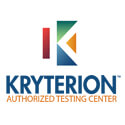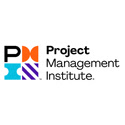Querying Microsoft SQL Server 2014
About This Course
The Microsoft SQL Server 2014 training course is designed for candidates, who are enthusiasts about learning SQL Server 2014 or SQL Server 2012. The course covers all the latest features of Microsoft SQL Server 2014 along with critical capabilities across data platform of SQL Server. Most importantly, the course prepares you with essential knowhow and skills to help pass Exam 70-461.
Who Should Attend This Course
The course is a hot favorite among IT professionals, who are keen to pass the 70-461 Exam.
It is apt for:
- Database developers
- Database administrators
- Business intelligence experts
The course is also well-suited for SQL power users, who plan to take up the 70-461 Exam. This includes application developers, business analysts and report writers.
Why This Course
The course will help you drive your SQL server understanding to a whole new level by helping you learn write queries and administer databases using T-SQL. Simply put, the course fast forwards you from a front-end noob to a back end ninja in the SQL Server administration domain. It covers the essential ins-and-outs of administering, programming and managing SQL Server 2014 whilst covering T-SQL language to help you learn create database objects using data definition language (DDL) and write queries using data manipulation language (DML).
Most importantly, Microsoft SQL Server 2014 certification course serves as a stepping stone to prepare for the 70-461 Exam followed by professional certifications for business intelligence and data platform.
Did you know a Microsoft SQL Server 2014 certified expert earns around $90,303 / annum (source: itcareerfinder.com)
Course Objectives
After completing the course, candidates can:
- Implement transaction and handle errors
- Use set operators
- Aggregate and group data
- Program with T-SQL
- Data sorting
- Query multiple tables
- Write SELECT queries
- Work with Data Manipulation Language (DML)
- Work with Data Definition Language (DDL)
- Use subqueries
- Use built-in functions
- Use table expressions
Prerequisites
- Basic understanding of Windows OS and its key functionalities
- Adequate understanding of relational database
Course Benefits
After the successful completion of this course, a candidate can:
- Query multiple tables
- Execute data modification with the help of T-SQL
- SQL Server 2014 programming
- Create database objects
- Work with Data Definition Language (DDL)
- Work with Data Manipulation Language (DML)
- Appear for the 70-461 exam
- Administer business intelligence
- Administer database
- Develop databases
Skills and tools you will get to learn in this course include:
- T-SQL
- Filtering and sorting data
- Setting up operators
- T-SQL programming
- Handling server errors
- Managing transactions in the SQL Server
- Aggregation and grouping of data





























